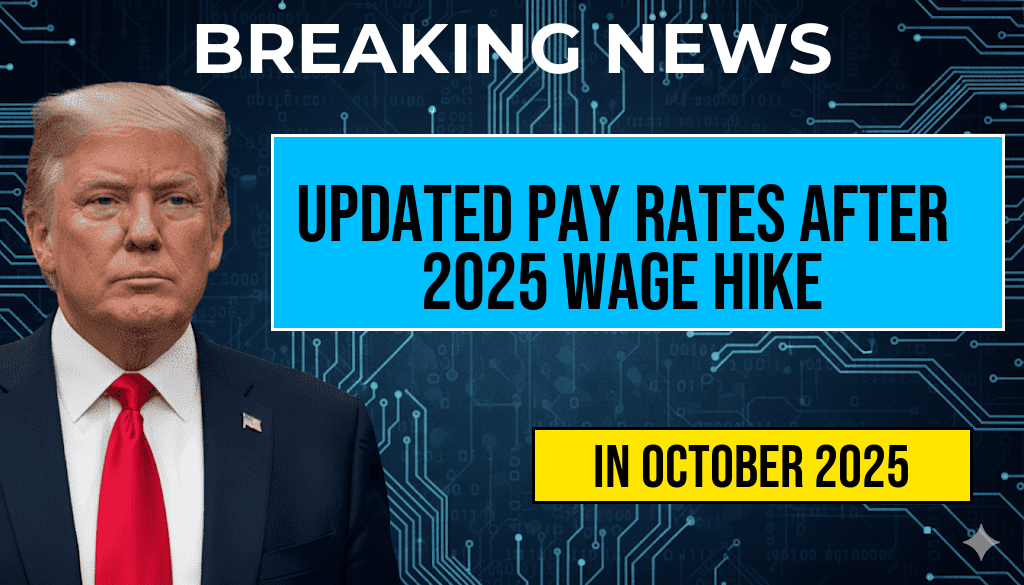On October 4, 2025, new hourly pay rates will take effect following a significant increase in the federal minimum wage in the United States. This adjustment reflects ongoing discussions about living wages and their impact on economic conditions across various sectors. The minimum wage will rise to $15 per hour, a move aimed at improving the financial security of millions of American workers. This increase was largely influenced by advocacy groups pushing for higher wages for low-income employees, particularly in the wake of inflation and rising living costs. As states and cities begin to implement these changes, employers across the country are preparing to adjust their payroll systems and budgets to comply with the new regulations.
Understanding the Wage Increase
The U.S. federal minimum wage has remained unchanged since 2009, set at $7.25 per hour. The upcoming increase to $15 per hour marks a significant shift in labor policy, reflecting a growing consensus that the current wage does not meet the basic needs of workers. According to the U.S. Department of Labor, nearly 1.3 million workers are expected to benefit from this change, many of whom are employed in sectors like retail, hospitality, and service industries.
State-Level Responses
While the federal minimum wage sets a baseline, many states and municipalities have already enacted their own minimum wage laws that exceed the federal rate. As the federal wage increases, some states may reassess their own minimum wage regulations. Below are examples of state responses:
- California: Currently at $15 per hour, California plans to maintain this rate without additional increases.
- New York: New York City has a minimum wage of $15, while upstate areas have different rates, which may need to be adjusted.
- Florida: Florida’s minimum wage is set to increase to $15 by 2026, aligning with the federal increase.
Impact on Businesses
Businesses are preparing for the implications of the wage increase. Many employers are assessing their current pay structures to ensure compliance while balancing their operational costs. Some potential impacts include:
- Increased Labor Costs: Employers may face higher payroll expenses, which could lead to price adjustments in their products and services.
- Employee Retention: Higher wages may improve employee retention and reduce turnover rates, ultimately benefiting businesses in the long run.
- Automation and Efficiency: Some companies may explore automation as a means to offset increased labor costs.
Economic Perspectives
Economists have mixed opinions on the effects of raising the minimum wage. Supporters argue that a higher minimum wage can lead to increased consumer spending, which stimulates economic growth. Conversely, critics caution that it may lead to job losses or reduced hours for low-wage workers. A report from the Economic Policy Institute suggests that the long-term benefits of wage increases outweigh the potential downsides.
Future Considerations
As the minimum wage increases, it is essential to consider the broader implications for workers and the economy. Policymakers will need to monitor the effects of this wage hike on job growth, inflation, and overall economic stability. Furthermore, discussions about implementing a living wage standard could gain momentum, especially in light of ongoing inflationary pressures.
| State | Current Minimum Wage | Projected Minimum Wage (2025) |
|---|---|---|
| California | $15.00 | $15.00 |
| New York | $15.00 | $15.00 |
| Florida | $11.00 | $15.00 |
| Texas | $7.25 | $15.00 |
As the date approaches, employers, employees, and policymakers will continue to engage in discussions about the implications of this wage increase. The outcome will likely shape the future landscape of the American workforce and economy.
Frequently Asked Questions
What is the new minimum wage effective October 4, 2025?
The new minimum wage effective October 4, 2025, has been increased to $15 per hour, reflecting the latest adjustments made at the federal level.
How does the minimum wage increase affect hourly pay rates?
The minimum wage increase affects hourly pay rates by requiring employers to compensate workers with at least the new minimum, leading to potential pay adjustments for many employees.
Are there any exceptions to the new minimum wage law?
Yes, certain sectors such as tipped employees or small businesses may have specific exceptions or transitional provisions under the new minimum wage law.
When will the updated pay rates be implemented?
The updated pay rates will be implemented immediately on October 4, 2025, and employers are expected to comply by adjusting their payroll systems accordingly.
Where can I find more information about my state’s minimum wage laws?
For more information about your state’s minimum wage laws, you can visit your state’s labor department website or consult the U.S. Department of Labor’s resources online.

Leave a Reply